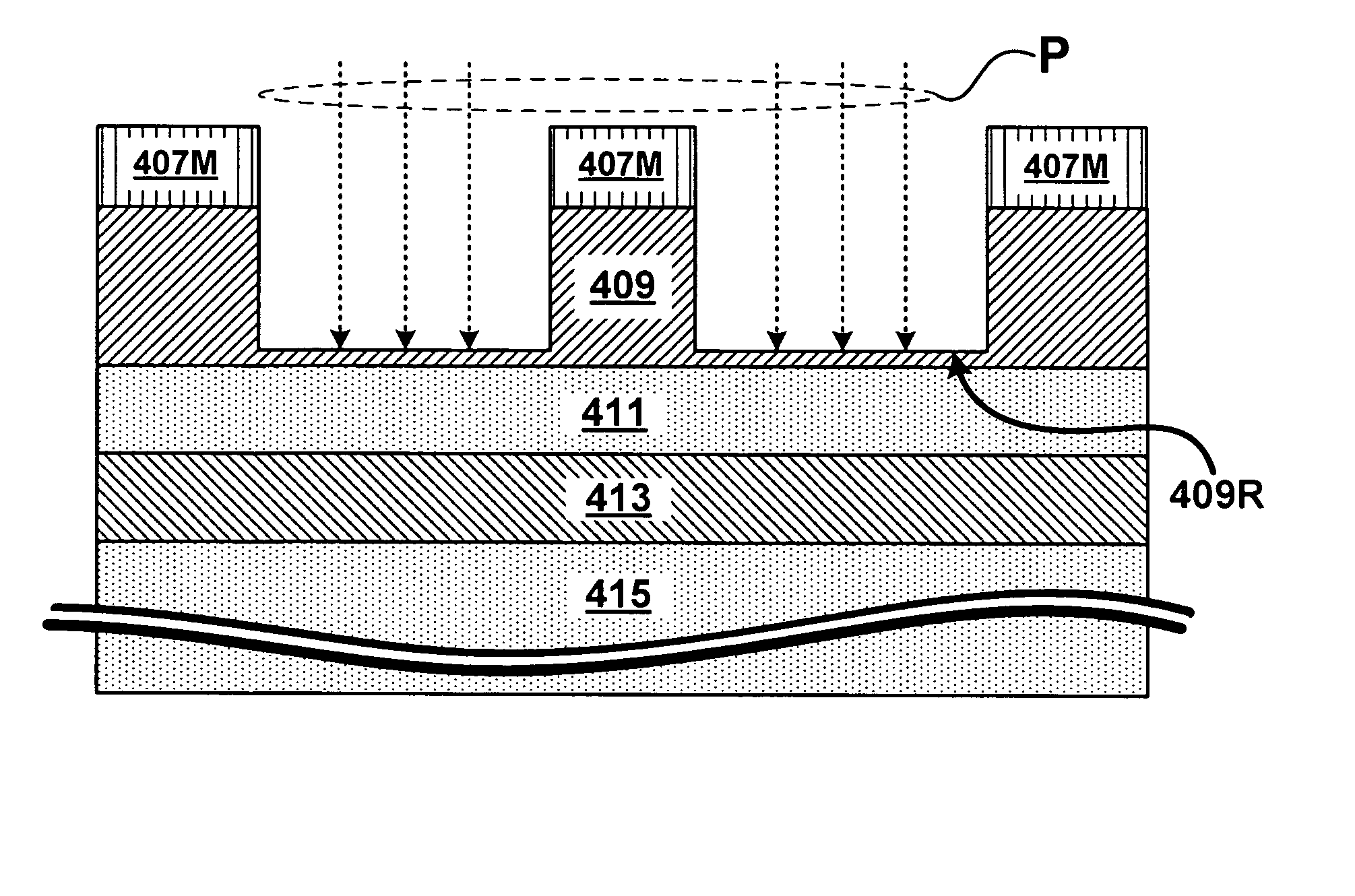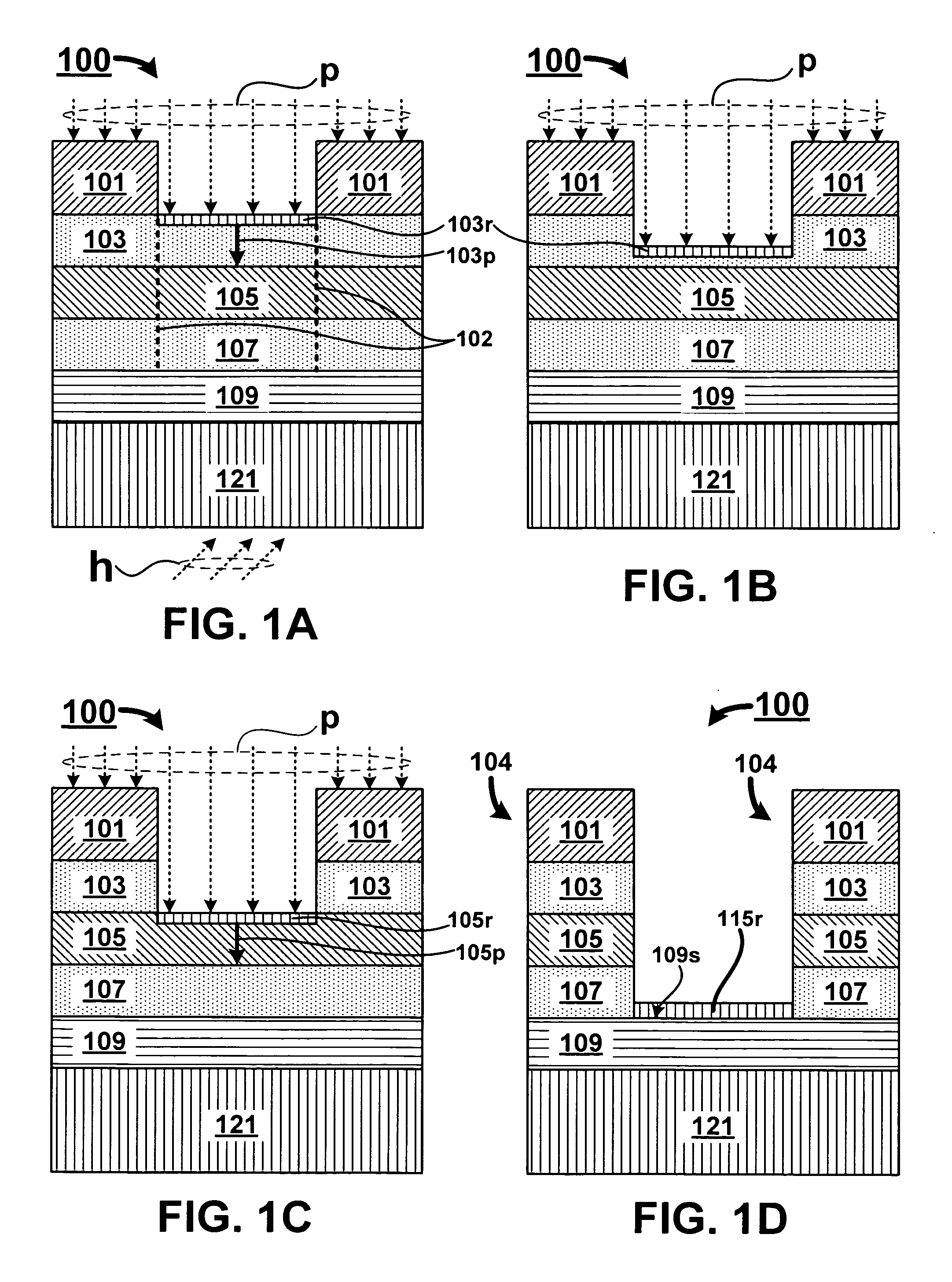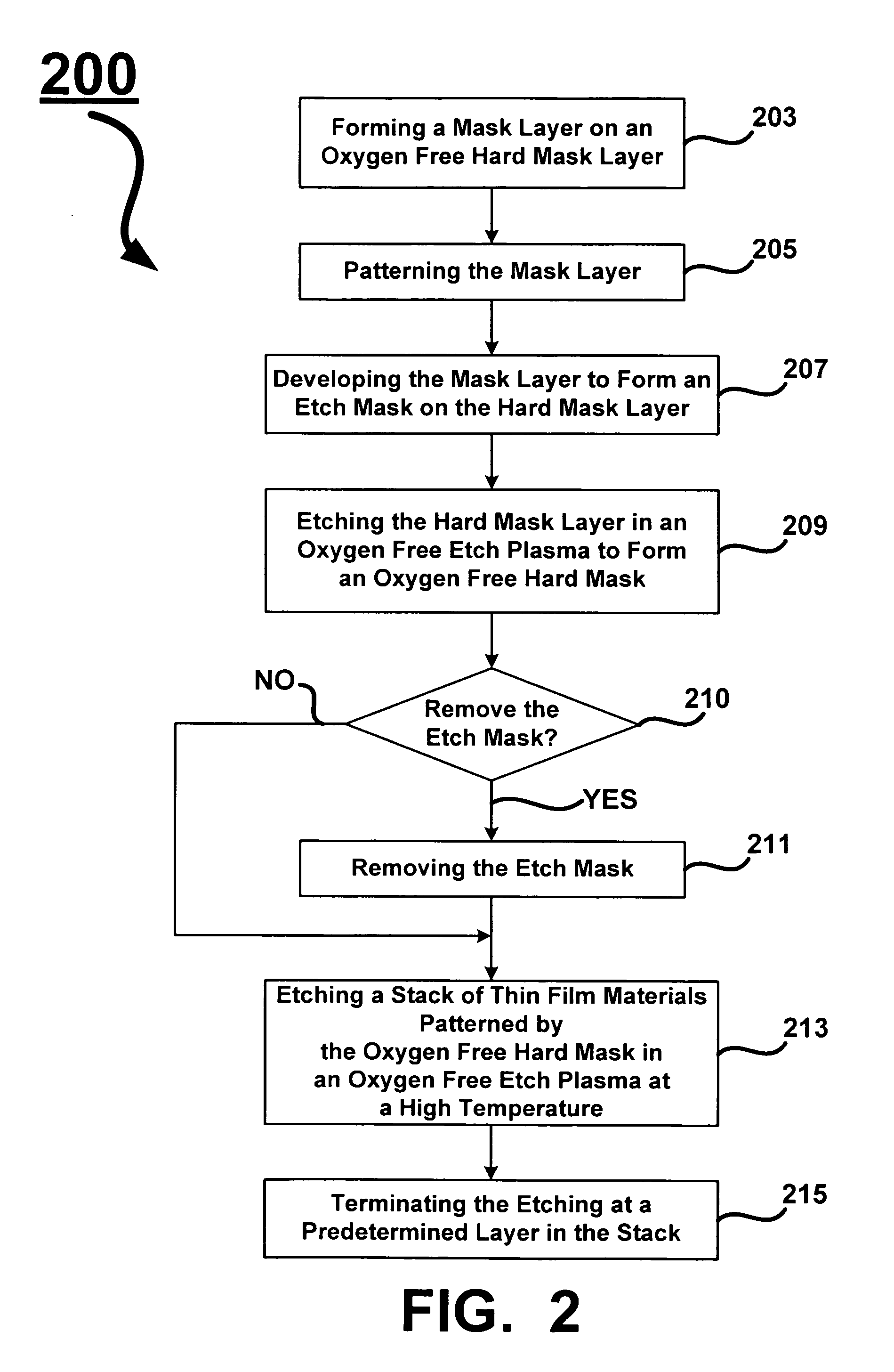Oxygen depleted etching process
a technology of oxygen depletion and etching process, which is applied in the manufacture of basic electric elements, semiconductor/solid-state devices, electric devices, etc., can solve the problems of high-temperature plasma etching process exceeding the thermal budget of photoresist materials, limited use of photoresist as hard masks, and yield reducing defects in devices
- Summary
- Abstract
- Description
- Claims
- Application Information
AI Technical Summary
Problems solved by technology
Method used
Image
Examples
first embodiment
[0036] As shown in the drawings for purpose of illustration, the present invention is embodied in a method of oxygen depleted etching of thin films at a high temperature. In a first embodiment, the method includes forming a mask layer on an oxygen free hard mask layer, patterning the mask layer, developing the mask layer to form an etch mask on the oxygen free hard mask layer, etching the oxygen free hard mask layer in an oxygen free etch plasma to form an oxygen free hard mask, optionally removing the etch mask, etching a stack of thin film materials patterned by the oxygen free hard mask in an oxygen free etch plasma at a high temperature, and terminating the etching at a predetermined layer in the stack of thin film materials.
second embodiment
[0037] In a second embodiment, the method includes forming a mask layer on a hard mask layer that is not oxygen free, patterning the mask layer, developing the mask layer to form an etch mask on the hard mask layer, etching the hard mask layer in a substantially oxygen free etch plasma to form a hard mask, optionally removing the etch mask, etching a stack of thin film materials patterned by the hard mask in a substantially oxygen free etch plasma at a high temperature, and terminating the etching at a predetermined layer in the stack of thin film materials.
third embodiment
[0038] In a third embodiment, the method includes forming a mask layer on an oxygen free titanium hard mask layer, patterning the mask layer, developing the mask layer to form an etch mask on the oxygen free titanium hard mask layer, etching the oxygen free titanium hard mask layer in an oxygen free etch plasma to form an oxygen free titanium hard mask, etching a stack of thin film materials patterned by the oxygen free titanium hard mask in an oxygen free etch plasma at a high temperature, and terminating the etching at a predetermined layer in the stack of thin film materials.
PUM
| Property | Measurement | Unit |
|---|---|---|
| temperature | aaaaa | aaaaa |
| temperatures | aaaaa | aaaaa |
| temperatures | aaaaa | aaaaa |
Abstract
Description
Claims
Application Information
 Login to View More
Login to View More - R&D
- Intellectual Property
- Life Sciences
- Materials
- Tech Scout
- Unparalleled Data Quality
- Higher Quality Content
- 60% Fewer Hallucinations
Browse by: Latest US Patents, China's latest patents, Technical Efficacy Thesaurus, Application Domain, Technology Topic, Popular Technical Reports.
© 2025 PatSnap. All rights reserved.Legal|Privacy policy|Modern Slavery Act Transparency Statement|Sitemap|About US| Contact US: help@patsnap.com



